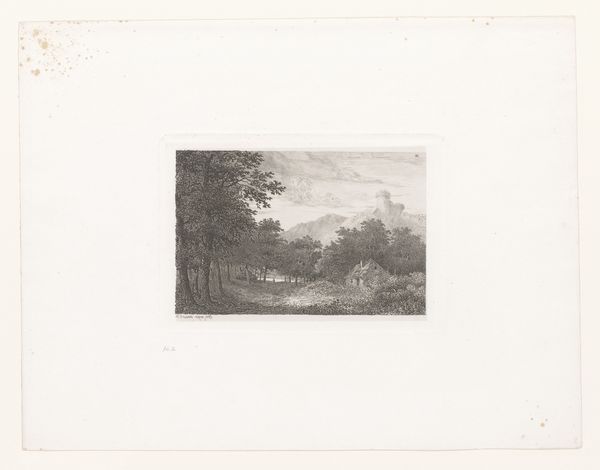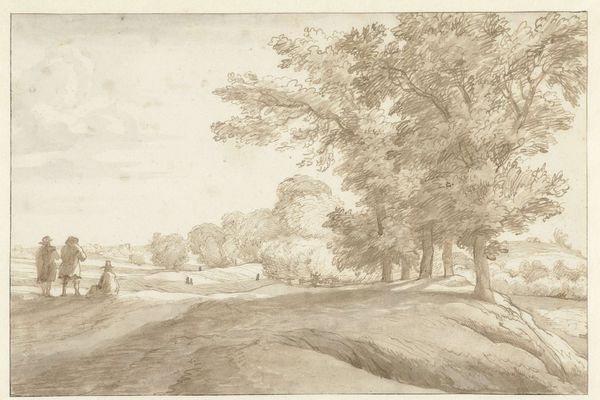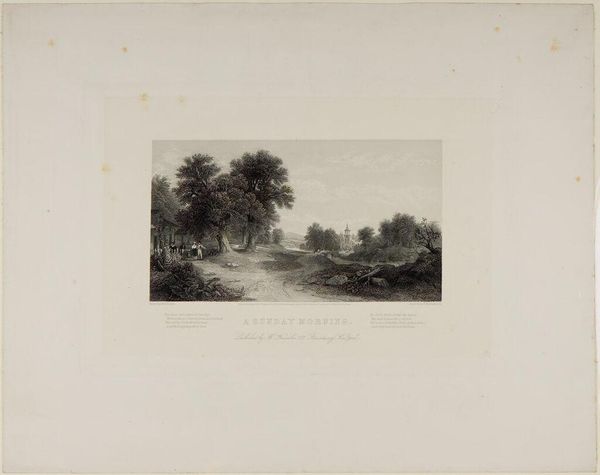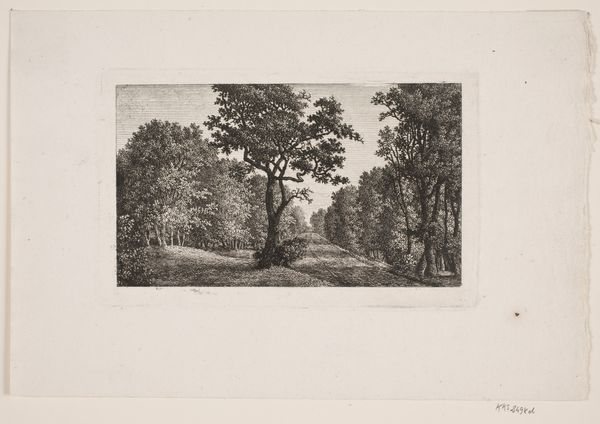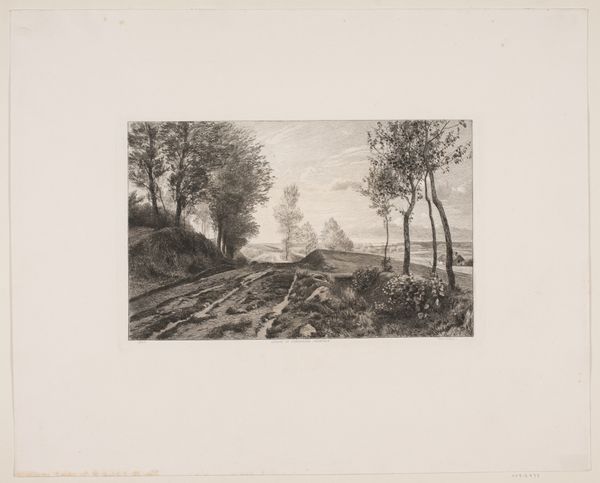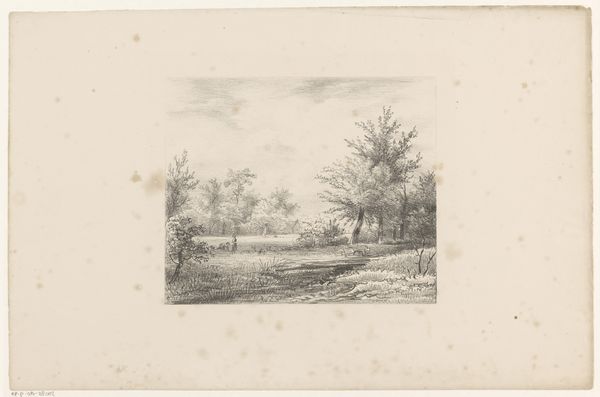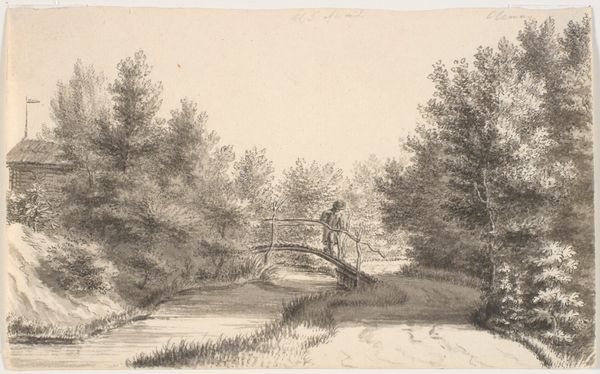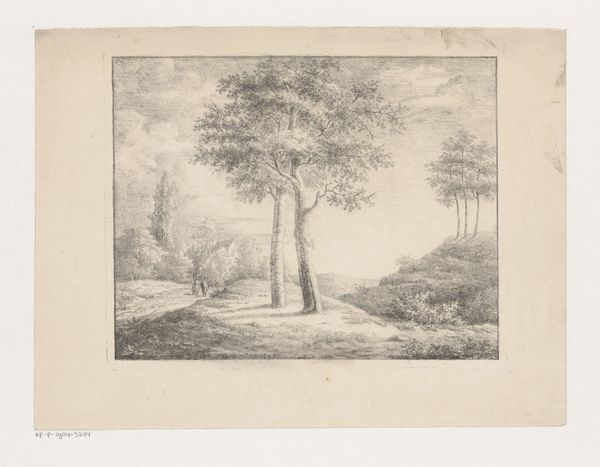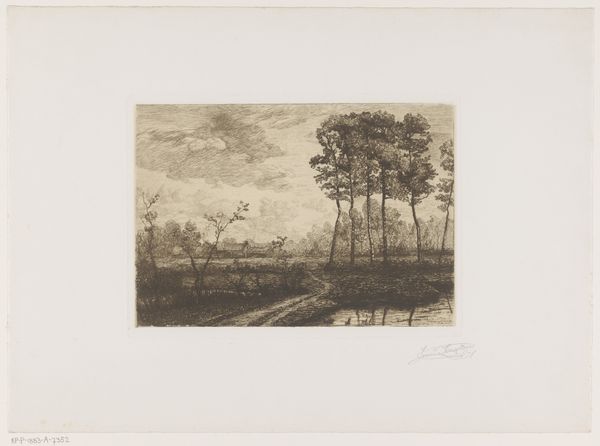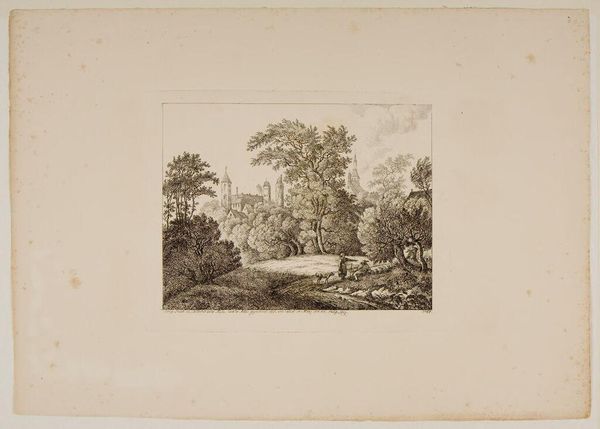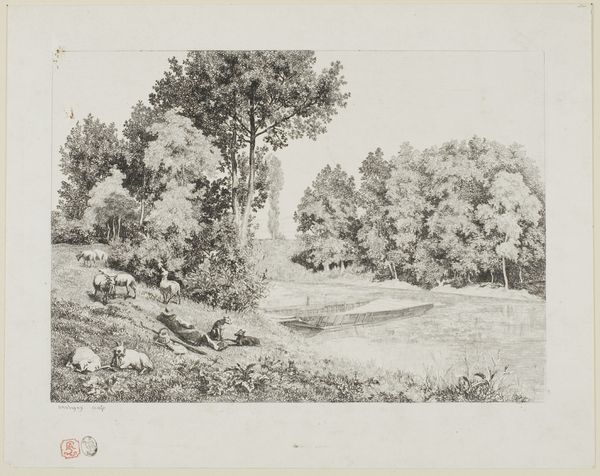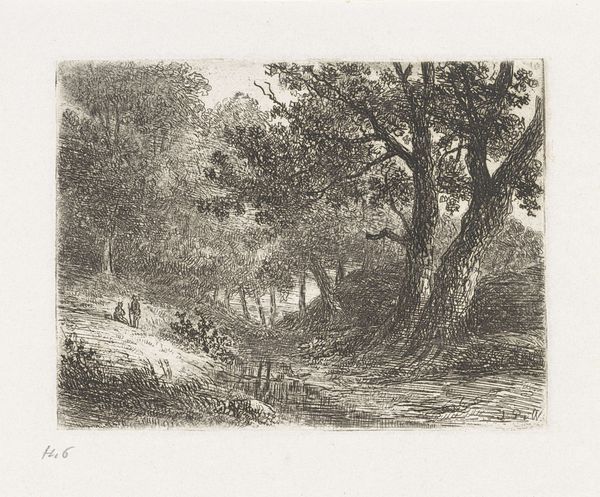
The Eagle's Nest in the Forest of Fontainebleau 1844
0:00
0:00
drawing, print, etching, paper
#
drawing
# print
#
etching
#
landscape
#
paper
#
romanticism
#
realism
Dimensions: 141 × 213 mm (image); 188 × 244 mm (plate); 243 × 319 mm (sheet)
Copyright: Public Domain
Editor: This is Charles-François Daubigny's "The Eagle's Nest in the Forest of Fontainebleau," an etching from 1844. I find the light and dark contrasts create an intriguing sense of depth. How would you interpret the artist's choices? Curator: The most salient feature is Daubigny’s employment of line and texture. Note how he builds form through carefully placed hatched lines. See how this builds contrast between the smooth open area and the more densely packed region populated with trees. How do you read this tension? Editor: It feels very structured, almost like two different worlds colliding. But the road continues. It carries my eye deeper into the composition and mitigates the sharp value shift. The perspective also appears unusual, especially regarding the distribution of tones from dark foreground to light horizon. Curator: Precisely. Daubigny's construction relies heavily on controlled tonal progression across a carefully measured space. The subtle use of dark, light and medium tones serves not only to unify but also to compartmentalize the image, creating what you describe as the sensation of "two worlds colliding." What feeling do you find that evokes? Editor: There is certainly something calming about its pictorial organization, with a clear separation between nature's wild growth on both sides. It’s as if he's arranging things so that nature looks controlled somehow. I’m struck by how it pulls you in but also holds you at a distance. Curator: I agree. By observing the nuances of technique—line, contrast, perspective—we gain entry into the intentional structuring that constitutes the artwork’s specific aesthetic reality and potential affective capacity. The careful and purposeful construction generates feelings and perspectives for us, shaping experience within an imposed framework. Editor: Thank you for explaining how a focused study of the print itself brings a richness and new awareness to Daubigny’s technical skill. Curator: You're welcome. Analyzing art with these strategies really emphasizes what details matter the most, I think.
Comments
No comments
Be the first to comment and join the conversation on the ultimate creative platform.
